A Quick Introduction to: the Software Development Lifecycle
Many businesses of all sizes are turning to custom software to improve how they work. Whether they’re looking to replace spreadsheets, speed up customer service, or move towards digital transformation, the way their software is created plays a big role in its success.
At the heart of any software project is something called the Software Development Lifecycle (SDLC). This is a plan or framework that software developers follow to design, build, and deliver software.
There are various models that can be used within the SDLC and choosing the right software development model might sound technical, but it’s a key decision that affects your budget, deadlines, and the final product. Don’t worry, this guide will explain everything in plain English, with no jargon, so you can feel confident in your understanding.
What is a Software Development Model?
A software development model is a framework or approach used to plan, build, test, and deliver software. It outlines how tasks are organised, in what order, and how progress is reviewed. Each model offers a different method for organising the stages of development based on things like:
- How flexible the project needs to be
- Is the level of risk high or low
- How much you or your team what to be involved
- The importance of testing or speed
Here’s a quick breakdown of software development models and whether they are classed as a software development lifecycle model:
| Model | Is it an SDLC Model? | Notes |
|---|---|---|
| 🌊Waterfall | ✅ Yes | Step-by-step and structured |
| 🔄Agile | ✅ Yes | Flexible and allows feedback |
| 🧭Scrum | ✅ Yes, a subset of Agile | Agile method using short sprints |
| 🎯Spiral | ✅ Yes | Risk-focused and repeated cycles |
| 🧪V-Model | ✅ Yes | Testing at each matching stage |
| 🌀Iterative | ✅ Yes | Builds in repeating versions |
| ⚙️DevOps | ✅ Yes, modern SDLC approach | Combines coding and operations |
While Scrum and DevOps are sometimes referred to as frameworks or practices rather than strict models, they are widely used today as full lifecycle strategies. Most modern development teams use them just like traditional software development models, especially when working with cloud services, digital transformation, or custom software.
Why Should You Care About Software Development Models?
You might think software development models are only important for developers or technical teams, but they affect far more than just code. Whether your company has its own in-house team or you’ve chosen to work with a software development partner, the model they use can make a big difference to your project’s success.
The development model:
- Affects how long your project will take to complete.
- Determines how often you’ll get updates or working versions to review.
- Impacts how easy it is to make changes during the process.
- Helps you manage costs and stay on budget.
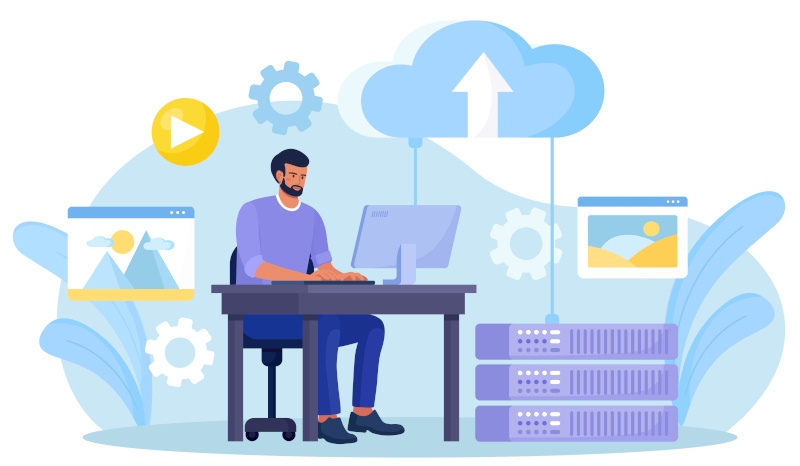
In short, even if you’re not writing the code yourself, understanding the development model gives you more control and helps you make better decisions.
| As Steve McConnell, a well-known author in software engineering, said in his book Rapid Development: Taming Wild Software Schedules (1996): 💬“The most important factor in software work is the quality of the software development process.” |
The Most Common Software Development Models
Here’s a quick table to help you compare the most popular models:
| Model | Best For | Pros | Cons |
|---|---|---|---|
| 🌊Waterfall | Clear, fixed requirements | Simple, step-by-step approach | Hard to change things once started |
| 🔄Agile | Projects needing flexibility or frequent updates | Frequent feedback, early results | Needs regular involvement and communication |
| 🧭Scrum | Fast-moving, team-focused projects | Focused teamwork, quick progress | Can be tricky without a strong project manager |
| 🎯Spiral | High-risk, complex projects | Built-in risk analysis and safety checks | More costly and complex |
| 🧪V-Model | Projects needing strict testing and reliability | Thorough testing at every stage | Rigid and time-consuming |
| 🌀Iterative | Projects expected to evolve over time | Can change and improve with each cycle | Needs a clear long-term vision |
| ⚙️DevOps | Projects needing fast delivery and regular updates | Great for cloud-based and regularly updated apps | Needs high automation and good tools to ensure success |
🌊Waterfall Model
The Waterfall model is one of the oldest and most traditional ways to build software. Think of it like building a house, you complete one phase fully before moving to the next. For example, you’d start by planning everything, then designing it, building it, testing it, and finally delivering it, all in a strict order. Each stage flows into the next, like a waterfall, which is where the name comes from. It works well when you know exactly what you want from the beginning and don’t expect many changes along the way.
🔄Agile Model
Agile is a flexible and modern way of building software. Instead of trying to build the whole thing in one go, Agile breaks the project into smaller parts called “iterations” or “sprints.” You get to see the software as it’s being built, give regular feedback, and make changes along the way. It’s a great choice if your ideas might change, or if you want to make sure the software really fits your needs by trying things out as you go.
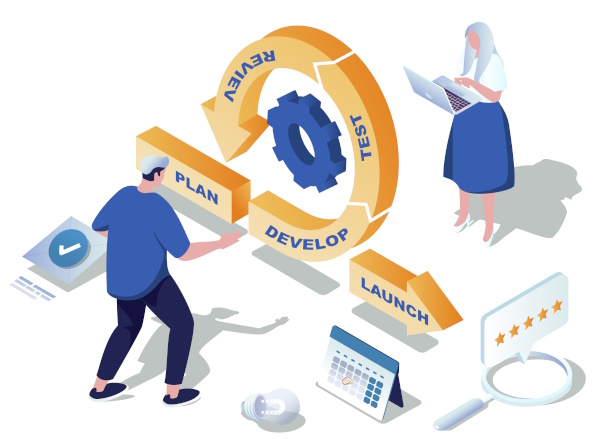
Waterfall vs Agile
These two models are the most popular ways to develop software. Each has its own strengths and is suited to different types of projects. Waterfall is better when everything is clearly planned from the start, while Agile is ideal when things might change and flexibility is needed. The Waterfall model is often used when working on a fixed-price project basis and Agile works better when paying by the hour.
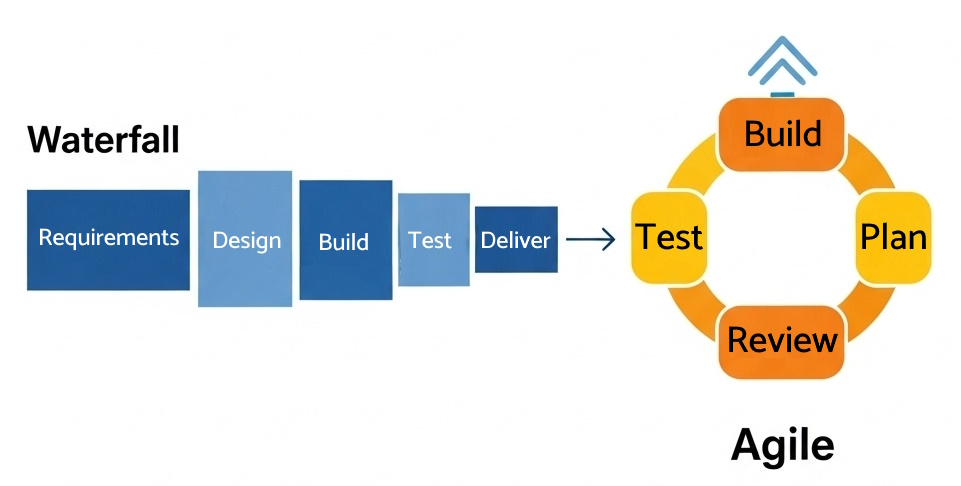
If you’d like to learn more, check out our full blog posts:
- 👉 Waterfall Lifecycle: Software Development Model
- 👉 Disciplined Agile Delivery
- 👉 Custom Software: Agile vs Waterfall Method
These posts go into more detail and will help you decide which method might be right for your project.
🧭Scrum Model
Scrum is a popular method within Agile that focuses on teamwork and fast results. The work is split into short, focused time periods (usually two to four weeks) called “sprints.” During each sprint, the team works on specific features or goals and reviews progress at the end. Scrum works well when you have a small, committed team that can meet regularly to plan, update, and adjust as the project moves forward. It’s ideal for fast-paced projects where everyone is working closely together.
🎯Spiral Model
The Spiral model is often used for larger or more complicated projects, especially those that come with higher risk. It combines careful planning, repeated testing, and ongoing feedback. Imagine a spiral that loops around again and again, each time planning, building, checking for risks, and then improving. This model is very thorough, making it a strong choice when you need to manage safety, security, or financial risks carefully, such as in finance or healthcare software.
👉 Check out this article for a fuller explanation of the Spiral Model
🧪V-Model (Validation & Verification Model)
The V-Model is a variation of the Waterfall method that places extra importance on testing at every stage. For every step where something is created (like planning or designing), there is a matching step to check that it works correctly. These steps form a “V” shape when laid out on a chart, which is where the name comes from. It’s often used in industries that require strong regulation and reliability, where mistakes must be avoided and every detail needs to be double-checked.
🌀Iterative Model
The Iterative model builds software in small steps and improves it each time. You start with a basic version of the software, then keep adding to it and improving it based on what works and what doesn’t. Each version, or “iteration,” brings you closer to the finished product. It’s a good choice when you don’t want to wait until the end to see results, and when you’re happy to grow the software gradually with regular changes and improvements.
⚙️DevOps Model
DevOps is a modern, technology-driven model that brings together software development and IT operations. The goal is to build, test, and release software as quickly and smoothly as possible. This model uses a lot of automation and works best for online or cloud-based apps that need frequent updates. It creates a continuous cycle of building, testing, and delivering software, helping businesses stay fast and responsive while keeping everything running smoothly in the background.
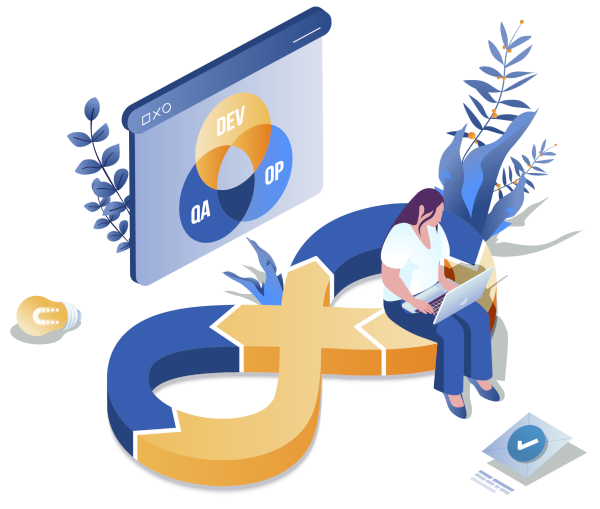
Key Questions to Help You Choose the Right Software Development Model
Choosing the right software development model starts with understanding what you need from the software. Asking the right questions early on helps avoid problems later. Let’s look at each of these important questions and why they matter.
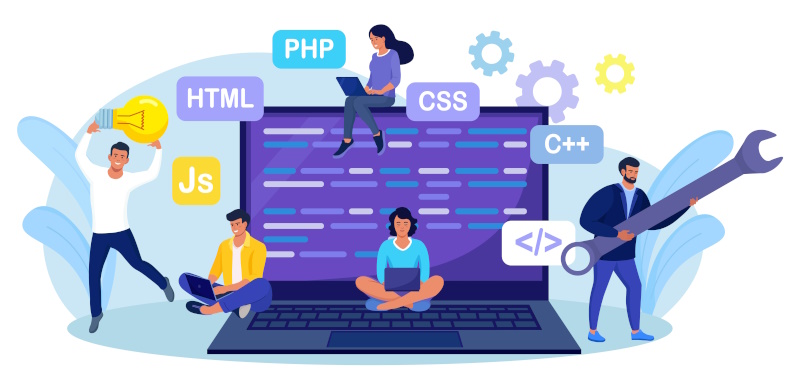
🔍 1. How clear are your requirements?
Ask yourself:
Do I already know exactly what I want the software to do, or am I still figuring things out?
Why this matters:
If your ideas are clear, structured models like Waterfall might work well, you can plan everything upfront and follow a step-by-step process. But if you’re still exploring or want to test out ideas as you go, you’ll need a more flexible model like Agile. That way, you can adjust the plan and add features over time.
Example:
If you’re building an app to manage bookings, and you already have a list of exact features, a fixed plan may work. But if you’re unsure what your customers need, a flexible model lets you test and change things.
🔄 2. Do you expect the project to change or grow over time?
Ask yourself:
Will the software stay mostly the same after it’s finished, or do I plan to add more features and updates later?
Why this matters:
Some models, like Iterative or Agile, are designed for projects that change over time. These allow you to release your software in small parts and keep improving it. On the other hand, if the project is simple, doesn’t need future updates, or has strict rules (like government systems), a more structured model might be better
Example:
An internal tool for staff reporting may not change much. But a customer-facing website might need regular updates based on feedback; so, you’d need a model that supports growth.
👥 3. How involved can you be during development?
Ask yourself:
Can I (or someone in my business) give regular feedback and be part of the decision-making process, while the software is being built?
Why this matters:
Models like Agile work best when there’s regular input from you. That way, the developers can check if the software meets your needs as they go. If you’re too busy or prefer to hand everything over, a model with fewer check-ins, like Waterfall, may be more suitable. Just remember, less involvement means less chance to make changes mid-way.
Example:
If you want to give feedback every week to fine-tune the software, Agile is ideal. But if you’re tied up and only want to review at the end, you’ll need a different approach.
⏱️ 4. Do you need results quickly, or is quality the priority?
Ask yourself:
Am I aiming to get something live fast or am I happy to wait longer for a more complete, polished system?
Why this matters:
High-risk projects, like ones handling personal data, financial details, or brand-new technology; need careful planning and testing. The Spiral model is often used in these situations because it focuses heavily on reducing risk at every step.
Low-risk or smaller projects can use simpler models that are quicker and cheaper.
Example:
If you’re building a secure login system or anything involving payment processing, risk is high. If it’s a basic tool for team reminders, the risk is low.
⚠️ 5. How risky is the project, does it involve sensitive data or unknown technology?
Ask yourself:
Does the software need to be extra secure, or will the business be using new or unfamiliar systems?
Why this matters:
High-risk projects, like ones handling personal data, financial details, or brand-new technology; need careful planning and testing. The Spiral model is often used in these situations because it focuses heavily on reducing risk at every step. Low-risk or smaller projects can use simpler models that are quicker and cheaper.
Example:
If you’re building a secure login system or anything involving payment processing, risk is high. If it’s a basic tool for team reminders, the risk is low.
In Summary – Choosing the Right Software Development Model
Make sure you don’t rush this decision-making process; ensure you’ve done your research and answered the questions above. With the right amount of research and consideration, you’ll find that you can choose a life cycle that works. Even if you already have an idea of which life cycle is the best option for your company, it is still worth researching every option to ensure you have not missed a more optimal solution.
💡 Tip: The more flexible your needs, the more flexible your lifecycle model should be.
Not sure where to start? BSPOKE Software can guide you through choosing the best software development model for your project. We work with you to understand your goals, your business, and the best path forward.
Example: A Custom CRM for a Growing Business

For a ‘Customer Relationship Management’ system for a growing business, we might start with an Agile model, delivering features in small parts so your team can begin using the software right away. Later, if more complex modules are added (like reporting or integrations), we may shift into a Spiral model to handle risks and long-term planning.
Final Thoughts: Why It All Matters
Choosing the right software development model isn’t just a technical decision; it affects your whole project, from timelines and budgets to how well the final product meets your needs. The model should serve your business, not the other way around.
But What If You Choose the Wrong Lifecycle?
It’s okay. Software development models can change, and many businesses do switch their approach mid-way through a project. What matters most is reviewing progress regularly and keeping communication open.
At BSPOKE Software, we’ve helped many clients adjust their development process as their project evolves. Being flexible doesn’t mean being unplanned; it means staying open to improvement.
👉 Get in touch with us today and let’s take the next step towards building something great together.

